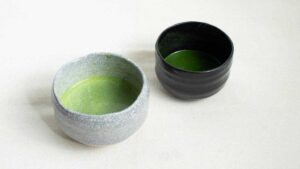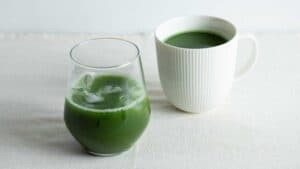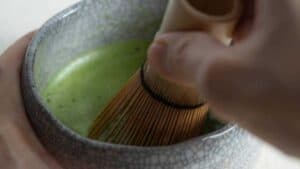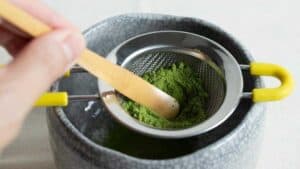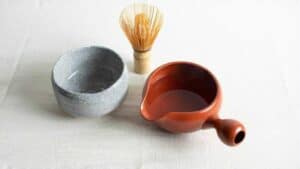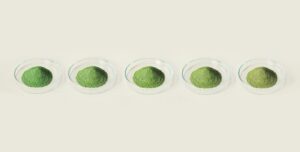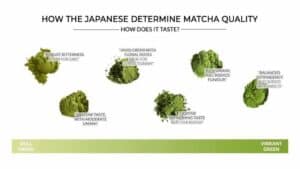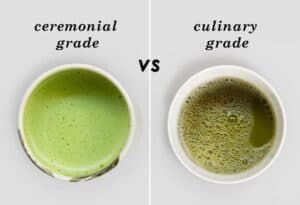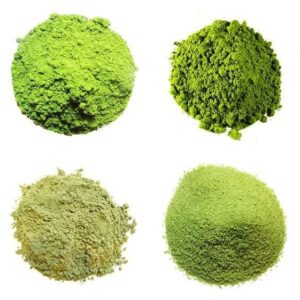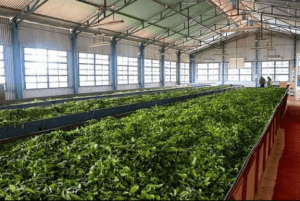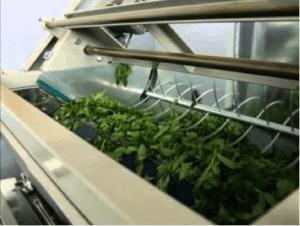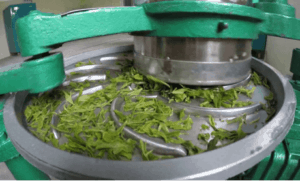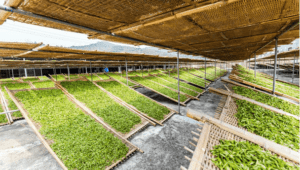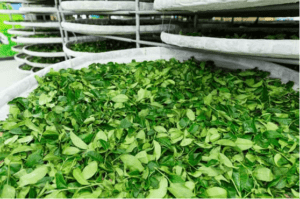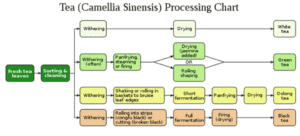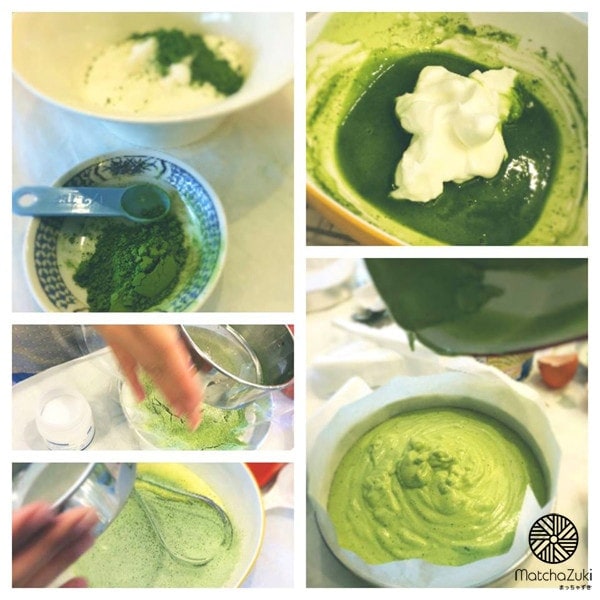Have you ever wondered why some green tea shops have a strong taste while others have a very weak taste, even though they use the same matcha powder? That’s because there are actually two ways to brew green tea in Japanese culture, called Usucha and Koicha. These are traditional ways of preparing matcha that originate from the Chado ceremony, a Japanese tea ceremony.
If we translate it directly from Japanese, Usucha means “light tea”, while Koicha means “strong tea”. It may not be easy to understand, but the meaning is straightforward. Usucha matcha has a thick layer of foam on the surface, which can be easily achieved by beating the tea with a tea brush. The taste is smooth. When you first drink it, it is sweet and bitter, but when you swallow it, you will get the umami taste. It is brewed in a small cup for one person, so the tea has a mild and slightly bitter taste. In the old tea ceremony, this type of tea was eaten with Higashi Japanese sweets, but nowadays it is eaten with namagashi, such as mochi, dango, nerikiri, and yokan.
On the other hand, Koicha matcha is much more concentrated and has an umami flavor that may be too strong for beginners to drink. This is because Koicha requires about twice the amount of matcha powder and half the amount of water compared to Usucha. Because in the tea ceremony, Koicha is brewed in a large container, so it can be drunk by many people, it needs to be brewed to have a stronger flavor.
It can be seen that in the two traditional styles of matcha brewing, the highest quality matcha is preferred for the ceremony, that is, using tea powder where the tea leaves are covered with leaves, to be exposed to the least amount of sunlight for the first 20 days or so. This period is calculated from the time when the first buds start to sprout. This covering to block the sunlight prevents the sweetness in the leaves and limits the bitterness that can be produced. The tea leaves are harvested by skilled hand pickers to maintain the quality of the tea leaves until the final stage. Because after picking the tea leaves, they must be steamed to prevent oxidation of the tea leaves and maintain their green color and freshness.
Then, it is dried and sorted to prepare for grinding with a large granite mortar into a fine tea powder called matcha [抹茶]. Whether the mortar is turned manually or automatically, the amount of tea powder that can be collected per hour is only forty grams. The best quality tea leaves are made from the top young leaves, so the production is labor-intensive, which inevitably makes the price relatively high.
Green tea is a beverage that has been with the Japanese for a long time. It is used in many important events, such as welcoming important guests, birthdays, or changing seasons, to truly experience the taste of drinking tea. However, making your own usucha and koicha does not make the activity a complete matcha tea ceremony in the Japanese style. This is because the actual ceremony has many other steps that are quite complicated.
Therefore, some cafes nowadays use the names of these two types of tea brewing as the names of their menus to help customers understand the taste and strength of the tea. There is no traditional Japanese tea ceremony when serving it.
However, even though Usucha tea is a light tea with a not very strong flavor, it may still be too strong for those who have never tried matcha. If you are not a regular tea drinker, it is recommended that you start with Matcha Latte first, or if you are using pure matcha, you should brew it weaker than the original Usucha.
How to prepare Usucha and Koicha
To make Usucha, mix 1 teaspoon of matcha powder with 60 ml of hot water and quickly whip the matcha in an M shape until dissolved. Repeat until the matcha has a thick foam with many small bubbles. Finish by whipping in a circle and lifting the matcha from the center of the bowl.
For concentrated Koicha, use 2 spoons of matcha powder with 30 ml of hot water and slowly stir in a circle until dissolved. Avoid creating bubbles to obtain a concentrated matcha with a consistent taste. The water used to brew both types of tea should be 85 degrees hot water, which is enough. This is another precaution to maintain the best taste of tea because each type of tea is suitable for different water. (Read more at https://bit.ly/3tWmvZj ) In addition to the temperature precautions, the water used to brew matcha does not need to be mineral water. Just use water with a neutral pH value. (Read more at https://bit.ly/3dRldcB )
Source
https://naokimatcha.com/recipes/usucha-and-koicha-2/
Article from : Fuwafuwa

